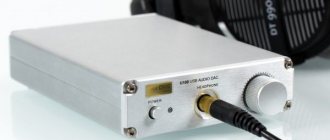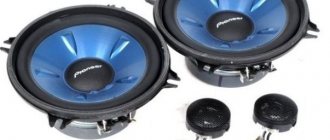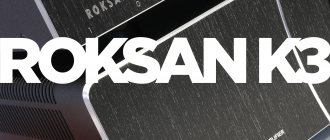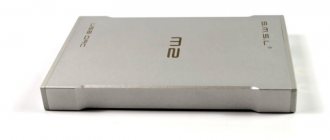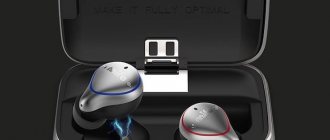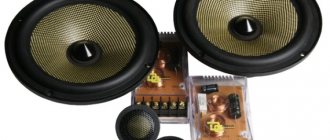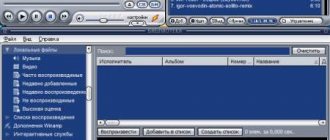Three models at once. For different purposes.
In the world of modern electronics, it is difficult to keep a “company secret”; only one thing is clear - the built-in DAC (digital-to-analog converter) and sound chip in your Macbook, iPhone or other player cannot be replaced or upgraded. After all, music is stored in digital format, while headphones and speakers reproduce an analog signal. What to do? Add another high-quality intermediate link between the signal from the player and your headphones or acoustics!
The production facilities of famous Hi-Fi brands are located in China, so one should not be surprised by the “Eastern” origin of their own Chinese audio brands, both Fiio and SMSL - these are Chinese manufacturers, whose products are nevertheless known throughout the world. The company name is an acronym for the full Shenzhen ShuangMuSanLin Electronics Co.
The company began its work in 2008, in the city of Shenzhen, and now their products can be found on the market in 30 countries, and in China itself there is a network of hundreds of branded stores. It is curious that SMSL is only one of the brands under which Shenzhen ShuangMuSanLin Electronics Co. products are manufactured, but the most famous and popular. In particular, under the SMSL brand they produce both full-fledged DACs and full-size receivers, as well as headphone amplifiers, the key requirements for which remain portability, ergonomics and high-quality sound. And ahead of events, I will say that these guys surprised me.
In front of me are two devices from SMSL that completely solve the problem of improving audio quality. And thirdly, for complete music geeks and supporters of home theaters with good sound. Three Shenzhen horsemen of the Hi-Fi apocalypse – iDol , M-3 and A2 . There is a fourth, fifth and others, but today only these guys stopped by. And they are all worth the money.
China has learned how to make good packaging. Not just good, but also interesting. Here, look at the first and smallest - iDol .
Inside is a small box almost made of birch bark, and in it is a metal case of a miniature headphone preamplifier - the Russian soul rejoices at this combination. Original!
Pocket iDol and versatile M-3
What do we have here? Isn't this the most portable DAC I've ever seen? SMSL iDol is the size of the remote control on your wired headset and at the same time with serious stuffing.
- KGI+N: ≤0.003%
- Signal to noise ratio: 105 dB
- Headphone output power: 100 mW + 100 mW (32 ohms @ 0.1%)
- Outputs: headphones, optical
- DAC: PCM5122
The amplifier is so light that even compared to modern smartphones, its weight is indistinguishable in your pocket. A full-fledged DAC that connects to Android smartphones and any computer via USB. And the desktop version of SMSL M-3 also works with mobile devices (a small life hack below).
iOS gadgets were deprived, despite the “i” in the name. The only cable included with the preamps is USB A and microUSB. Steve, how can this be? However, it was not possible to experiment with Lightning adapters. Let's leave room for hope in our hearts!
iDol and M-3 work with Android 4.0 and higher, Windows, MacOS and Linux (about three people reading this article are now sighing happily).
Everything is perfect under MacOS, all DACs were tested with it.
Everything is picked up on the fly, no bugs, no crackling (as with some external USB audio cards) and no problems.
The only thing worth noting is that the volume level when connected is not regulated by the system, but only by buttons on the preamplifier.
Sound. Are you waiting for this? In short, it is better than the audio output of all versions of Nexus, the standard output of Macbook Air, Pro and, of course, Windows laptops. What's better? It's as if you took the Drive knob and turned it off, brushed away the dust from your audio files from Apple Music or iTunes Match and warmed up your headphones thoroughly. Both 55 Ohm headphones and 250 Ohm impedance are rocked by the baby iDol to the fullest.
The volume is sufficient, the sound is denser, brighter and more driving. Favorite tracks sound just great on it:
The stage, compared to the professional interface from Emu or Asus Xonair Essense One, and iDol and M-3, is a little narrower and more tightly assembled in the center.
The sound seems to be additionally colored, but it is not “warm tube”, but bright and catchy.
What is the main difference between SMSL M-3 . This preamp and DAC is positioned as a desktop version. But it is more than mobile in size (compared to a pair of iPhone preamps “on an elastic band”) and, as noted above, there is a life hack. We take an external battery from USB, connect it to DC In, and connect it to Input 1 smartphone or tablet.
In addition, the M-3 does not “eat” the smartphone’s battery like the iDol . Otherwise, the difference is in the number of inputs/outputs and a little in the filling and characteristics.
- Output Power Level: 1.9 Vrms
- KGI+N: <0.006%
- Signal to noise ratio: >107 dB
- Dynamic range: >112 dB
- Channel Separation: >105 dB
- Inputs: USB, coaxial, optical
- Outputs: analog 2 x RCA, headphones
To start with the specifications:
The DAC has 3 inputs
: USB, optical and coaxial S/PDIF.
- via USB can accept PCM up to 32 bit and 768 kHz and DSD up to DSD512 (22.5792 MHz)
- via optical and coaxial PCM 24 bit 192 kHz
RCA outputs
: voltage at 0 dbFS 2.05 Vrms The delivery set is very “rich”, in addition to the DAC itself and the power supply in the box we find as many as 3 cables:
- USB AB for connecting to a computer
- OTG cable microUSB - USB B
- USB cable with a power connector at the other end (apparently if there is nowhere to plug the power supply)
I didn’t even unpack the last 2, they are still there:
At the request of the workers, I took a photo of the insides:
I bought my copy for about 14 thousand rubles, not so long ago my version was sold for 10-11 thousand rubles, and the last one for 12-13 thousand. But, due to recent exchange rate fluctuations, the price is no longer so attractive(.
There will be no unboxings or praises of Chinese engineering, but there will be full testing using the AuduiPrecision APx586 meter
Pet SMSL A2
The third preamplifier is no longer a DAC, but a completely serious, albeit small base for a home theater or acoustic stereo system. The SMSL A2 is anything but portable and has a hefty power supply.
40 W per channel and a subwoofer output are enough for a beginning film fan and audiophile. I just don’t recommend bypassing the instructions; there are several nuances regarding the settings. Here you can switch between inputs using a button on the front panel of the device; there is a built-in equalizer that allows you to adjust low and high frequencies.
- Output power: 2 x 40 W @ 4 ohms
- Signal to noise ratio: >90 dB
- Crosstalk: < -90 dB
- Frequency range: 20 - 20.000 Hz (± 3 dB)
- Speaker impedance: 3 - 16 Ohms
- KGI+N: <0.05%
- Inputs: 2 x RCA; 3.5 mm
I liked the sound of this preamplifier better. Although full-size acoustics are still more serious than headphones. From classics to Thom Yorke's signature howls and a remastered version of the collection of the somehow remembered Billy Idol - everyone sounds good.
And film sound is even better. Yes, there is only stereo and sub, but they made me watch the last scene in the rain from Bladerunner a couple of times.
Distortion and noise measurements.
I will post some results for frequency 44.1, the rest can be downloaded in PDF format from the link.
But at other sampling rates the parameters again turned out to be almost identical. Let me explain the measurement results a little. THD+N Ratio
shows the ratio of the sum of distortion and noise products to the fundamental tone
THD+N Level
shows the ABSOLUTE level of harmonics and noise.
THD Ratio
and
THD Level
are similar, only without taking into account the noise level. Distortion was measured at several levels: 0, -1, -3, -10, -20 dbFS
0 dbfs
-1 dbFS
-3 dbfs
-10 dbFS
-20 dbFS
IMD and Signal/Noise
Intermodulation distortion. In fact, the test specification describes the supply of signals at 60 Hz and 7 kHz, as opposed to the currently fashionable technique for supplying signals at 19 kHz and 20 kHz. But the last technique also makes sense. The signal/noise parameter turned out to be very impressive: 121-122 db!
Interpenetration of channels.
The procedure for performing this test is very simple. A -20 dbFS signal is supplied to one of the DAC channels, and the signal level is measured on the opposite channel.
Frequency change.
The next group of tests shows parameters depending on changes in the frequency of the signal supplied to the DAC.
Phase.
The change in phase of the signal at HF is caused by the operation of the digital filter. Since almost any filter, in addition to its main function, also “twists” the phase of the signal. The DAC digital filter is no exception. There are, of course, digital phase-linear filters, but they usually require very large computing power. For example, the Weiss EQ1 digital equalizer, when the linear phase mode is turned on, gives a delay of several hundred ms. But the value of 0.008 degrees can be easily neglected).
THD+N Ratio
Here you can clearly see an increase in the level of distortion with increasing signal frequency. But this is a "common" occurrence for most devices.
THD Ratio
Changing the signal level.
The last group of measurements shows the parameters when the signal supplied to the DAC changes. Range from 0 to -60 dbFS.
THD+N Ratio
THD+N Level
THD Ratio
THD Level
In fact, the meter software generates a report with a much larger number of points, but I will not list them all here; those interested can familiarize themselves with the PDF reports at the link at the end of the article)
Digital filters.
The DAC has 3 switchable digital filters: Fast, Slow, Mini.
Next I will give the frequency response of these filters. The Mini filter turned out to be the most nonlinear in terms of measurements. At frequencies 44.1 and 48, its uneven frequency response will fall into the audio range. Nonlinearity is 1.58 db. But in reality, hardly anyone will be able to notice this by ear). The graphs show the results of all filters at the same frequency. A little confusing is the absence or very high cutoff frequency of the analog filter in the DAC. At 192 kHz, active attenuation begins after 80 kHz. Although, of course, there is no really useful signal at such frequencies).
- red - Fast,
- green - Slow
- blue - Mini
44.1 kHz
48 kHz
88.2 kHz
96 kHz
176.4 kHz
192 kHz
Measurement results here)))
In the video I explain some points of the measurement methods:
Power unit.
Initially, the included switching power supply was questionable, but, as it turned out as a result of tests, when powered by a linear power supply, the characteristics of the DAC are practically indistinguishable. In terms of distortion, the result is absolutely the same. A small gain of 1.5-2 db in the signal-to-noise ratio. Perhaps the power supply of the DAC output stage from the ± 12 Volt pulse converter played a role in this. Unfortunately, this cannot be checked without significant intervention in the design of the DAC... And why, the results are already good).
Doubts crept in after measurements of one of the SMSL headphone amplifiers several years ago with a similar power supply. There, when powered from a complete power supply, the signal-to-noise ratio was almost 20 db worse than when powered from a linear power supply.


